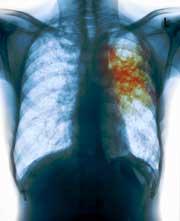This post is a quick update on some important biological threats that we have noticed lately. It is not a deep analysis, relying on some good articles linked here with some important highlights.
Ebola outbreak in West Africa
- To date, the mortality rate is approximately 60%, with no vaccine or cure in sight.
- The outbreak continues to spread and with a 21 day incubation period, thousands could be asymptomatic carriers.
- Open borders, primitive healthcare infrastructure, widespread ignorance of the disease and traditional medical practices are contributing to the rapid spread of the disease throughout West Africa.
- Seems to be limited to West Africa until now, but international travel continues
Newsweek “The current outbreak, which began in December 2013, is now considered to be the deadliest on record, WHO said in June. On June 23, WHO reported 635 Ebola cases, including 399 deaths. Now just two weeks later, the figures stand at 844 cases of Ebola in the three countries, including 518 deaths.â€
The Daily Beast “”Out of Control” Ebola Outbreak in West Africa Could Have 1,500 Victims Who Don’t Know They’re Carriersâ€. “Many more could be moving freely in the three countries battling the virus, Guinea, Liberia and Sierra Leone, but fear of the illness and mistrust of Western medicine means they refuse to come forward to speak to doctors.â€
Tuberculosis
- Tuberculosis is second behind AIDs as an infectious disease killer
- Ten thousand cases in the US in 2012, 83 treatment resistant, a decrease from 127 in 2011
- Most treatment resistant cases will not be cured; requiring 18 to 24 months of treatment and $500K
- Large disparity by race and income levels; 7 to 1 ratio, black to white
- Transmission across the Southern border is a growing risk
 New York Times: “Perhaps most critical is the high rate of tuberculosis among the two million people incarcerated in America. Prisoners are routinely screened and treated, but that treatment ends when they are released, even if they are not yet cured. Former prisoners are also among the least compliant of all patients, possibly because the strict medication regimen, which requires repeated contact with government health care personnel, feels like an extension of their prison term. There is no legal mechanism to determine which local health department “owns†a tuberculosis patient after he is released from federal or state custody.â€
New York Times: “Perhaps most critical is the high rate of tuberculosis among the two million people incarcerated in America. Prisoners are routinely screened and treated, but that treatment ends when they are released, even if they are not yet cured. Former prisoners are also among the least compliant of all patients, possibly because the strict medication regimen, which requires repeated contact with government health care personnel, feels like an extension of their prison term. There is no legal mechanism to determine which local health department “owns†a tuberculosis patient after he is released from federal or state custody.â€
Wall Street Journal: “For health officials, the challenge of trying to control an airborne disease along an area as large as the U.S.-Mexico border is enormous. More than 150 million people cross the border each year. Many, like Mr. Garcia, go back and forth to work, or to play, with visas that allow short trips in the border region. Two CDC quarantine stations sit along the border to deal with health concerns. “TB is the most common disease we get called about,” said Steve Waterman, chief of the CDC’s U. S-Mexico unit in the agency’s Division of Global Migration and Quarantine.â€
CDC: “Mexico has relatively low tuberculosis (TB) and HIV prevalence rates, but contributes to 23% of TB cases in the United States among foreign-born individuals. The Mexico National Tuberculosis Program (NTP) and Centers for Disease Control and Prevention’s Division of Tuberculosis Elimination (CDC/DTBE) have been in close collaboration since 1995 to expand the WHO-recommended Directly Observed Therapy Short-course (DOTS) strategy in Mexico and improve TB control along the United States-Mexico border. CDC/DTBE provides technical assistance in the following areas: trainings, operational research, and capacity building. Since 2009, CDC/DTBE has had a regional TB technical advisor (Medical Officer) providing assistance to Latin America. CDC/DTBE continues to collaborate and support the National TB Program, Epidemiology Office and Insituto Nacional de Enfermedades Respiratorias (INER).â€
Middle East Respiratory Syndrome (MERS)
- First US Victim in May 2014
- Latest Risk of spreading through Hajj pilgrimage to Saudi Arabia
- Approximately 35% mortality rate, no vaccine or cure
CBS: “The U.N. agency has recorded 827 cases of MERS and 287 deaths, mostly in Saudi Arabia. The virus is believed primarily acquired through contact with camels and spread among humans through body fluids and droplets.â€
CDC : “So far, all the cases have been linked to countries in and near the Arabian Peninsula. This virus has spread from ill people to others through close contact, such as caring for or living with an infected person. However, there is no evidence of sustained spreading in community settings.
: “So far, all the cases have been linked to countries in and near the Arabian Peninsula. This virus has spread from ill people to others through close contact, such as caring for or living with an infected person. However, there is no evidence of sustained spreading in community settings.
CDC continues to closely monitor the MERS situation globally and work with partners to better understand the risks of this virus, including the source, how it spreads, and how infections might be prevented. CDC recognizes the potential for MERS-CoV to spread further and cause more cases globally and in the U.S. We have provided information for travelers and are working with health departments, hospitals, and other partners to prepare for this.â€
Again, this post a quick update and not meant to be a detailed analysis. What we find concerning is the fact that each of these diseases, including the treatment-resistant TB, are very hard to cure and can easily be spread through international travel before symptoms appear.






0 Comments